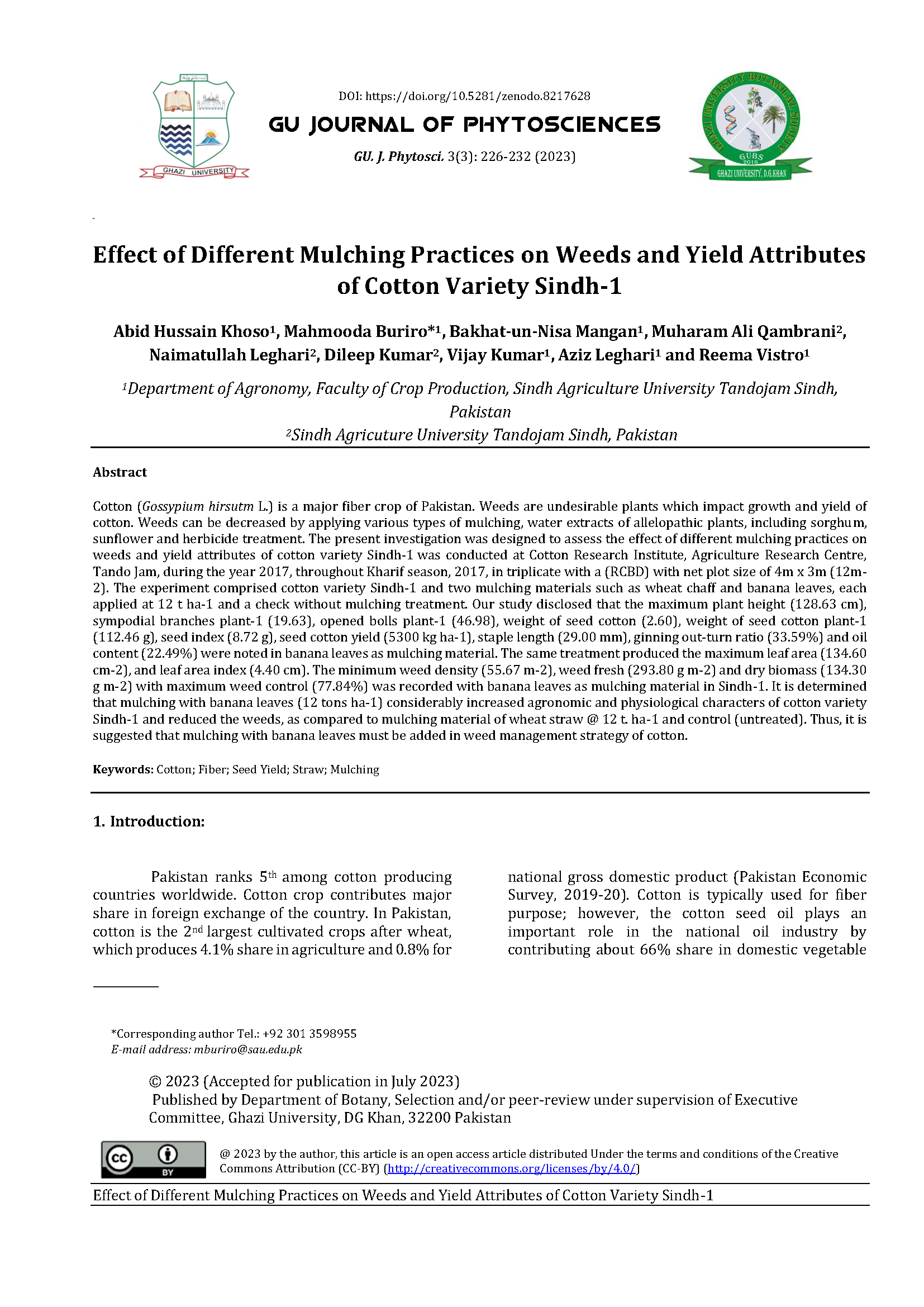Effect of Different Mulching Practices on Weeds and Yield Attributes of Cotton Variety Sindh-1
Keywords:
Cotton, Fiber, Seed Yield, Straw, MulchingAbstract
Cotton (Gossypium hirsutm L.) is a major fiber crop of Pakistan. Weeds are undesirable plants which impact growth and yield of cotton. Weeds can be decreased by applying various types of mulching, water extracts of allelopathic plants, including sorghum, sunflower and herbicide treatment. The present investigation was designed to assess the effect of different mulching practices on weeds and yield attributes of cotton variety Sindh-1 was conducted at Cotton Research Institute, Agriculture Research Centre, Tando Jam, during the year 2017, throughout Kharif season, 2017, in triplicate with a (RCBD) with net plot size of 4m x 3m (12m-2). The experiment comprised cotton variety Sindh-1 and two mulching materials such as wheat chaff and banana leaves, each applied at 12 t ha-1 and a check without mulching treatment. Our study disclosed that the maximum plant height (128.63 cm), sympodial branches plant-1 (19.63), opened bolls plant-1 (46.98), weight of seed cotton (2.60), weight of seed cotton plant-1 (112.46 g), seed index (8.72 g), seed cotton yield (5300 kg ha-1), staple length (29.00 mm), ginning out-turn ratio (33.59%) and oil content (22.49%) were noted in banana leaves as mulching material. The same treatment produced the maximum leaf area (134.60 cm-2), and leaf area index (4.40 cm). The minimum weed density (55.67 m-2), weed fresh (293.80 g m-2) and dry biomass (134.30 g m-2) with maximum weed control (77.84%) was recorded with banana leaves as mulching material in Sindh-1. It is determined that mulching with banana leaves (12 tons ha-1) considerably increased agronomic and physiological characters of cotton variety Sindh-1 and reduced the weeds, as compared to mulching material of wheat straw @ 12 t. ha-1 and control (untreated). Thus, it is suggested that mulching with banana leaves must be added in weed management strategy of cotton.

Downloads
Published
How to Cite
Issue
Section
License
Copyright (c) 2023 The Author

This work is licensed under a Creative Commons Attribution-NonCommercial 4.0 International License.
All works published by the GU Journal of Phytosciences are freely available to copy, distribute, transmit, and adapt the work provided the original work and source are appropriately cited under a CC BY-NC 4.0 International License. The CC BY-NC licence allows for maximum re-use of open-access materials, and the author has full copyright over their publication. Under this license, users are free to share (copy, distribute, and transmit) and adapt for any purpose, but not for any commercial use (read full legal code).
Under Creative Commons, authors retain copyright in their articles.



